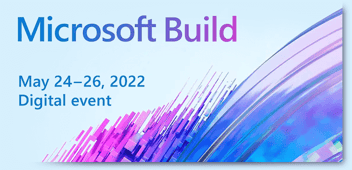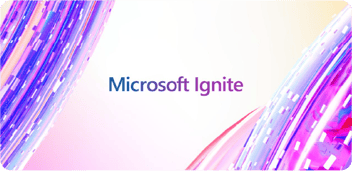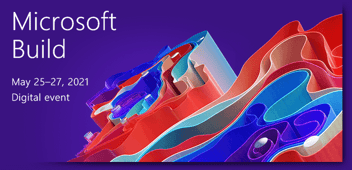It’s a little over a week since Microsoft Build 2020 Digital Experience concluded. According to CNN, the event attracted more than 230,000 registrations. I’ve had time to digest through many of the announcements and releases since Build, and I wanted to reflect a bit on those. If you missed my recap of the key segment sessions, you can read it here.
The digital experience
Since mid-March, we’ve all probably experienced plenty enough of virtual meetings over Microsoft Teams and Zoom. I restructured my home office a bit to suit the coming months and presumably dozens of calls and meetings each week. Turning on video makes all the difference, I believe. Thus, it was great to experience the digital version of Build this year. I’ve frequently attended Build when it was an in-person event in previous years, and obviously, the digital experience cannot deliver the same results. Yet, I feel it was a very well conducted event on this scale.
A portion of the Build sessions used a virtual stage, which comprises a virtual green screen, the Azure Kinect sensor, and deep neural networks. See this GitHub repo for technical details and actual source code. For regular breakout sessions, speakers delivered those from home, and Microsoft Teams Live Events was used – which worked well for this purpose. This also highlighted the fact that having a quality microphone is crucial for any virtual deliveries.
Hopping between sessions was much nicer than usually in an in-person event, where you might need to optimize your walking route to make it in time for the next session. I saw many friends watching Build sessions in their living room from a big TV, which made the event all the more inclusive and accessible.
You can view the on-demand (recorded) sessions from Build here.
Delivering a session at Build
Our team at Microsoft, the Western Europe Developer Product Marketing Managers (or WE Dev PMMs for short), had a joint session at Build, too. We are 12 people in the team, and we were given a 90-minute slot to fill with exciting content. We chose to connect with developers both locally and internationally – you can view the recording here. As we had plenty of guests, our sessions required a bit more orchestration than a regular session. Switching between speaker video feeds, muting mics, sharing content from multiple people, and monitoring the Q&A for exciting questions is a bit like having a BBQ with a Big Green Egg on a hot summer day – it’s fun. Still, you have to be careful yet determined to produce great results.
I’m immensely happy with how our session turned out. My responsibility was to run the panel discussion, with Sakari Nahi, Isidora Katanic, Maria Ovchinnikova, and Goran Vuksic as guests. The panel discussion starts at the 30th-minute mark during our session.
Interesting announcements
Microsoft published the traditional Book of News for Build, and you can view a friendly online version of that here. Different announcements interest different people, so let me dig into a couple of the major ones, and how those might map the path forward in the coming months. I’ll aim to have something for everyone here.
Microsoft Azure has the most considerable portion of announcements and news from Build.
Azure Arc support for Kubernetes clusters is now in public preview. I wrote about getting started with Azure Arc previously, and now when it’s expanded to support Kubernetes also, you can expand your governance models across multiple clouds and data centers. See session INT142 from Build for an overview.
Azure Resource Manager (ARM) templates are getting new enhancements. This includes a long-needed “What-If” option for your templates and scripts. Fun sidenote: “what if” can be freely translated in Finnish to “mitäsitte,” which is a bit like “na ja” in German. Thought you could use this nugget! See INT146A for insights into ARM templates. Also, see updates to the documentation on ARM templates here.
Azure Cosmos DB gets new offers – including a “serverless” pricing model. See INT125A for updates on Cosmos DB. See also this comprehensive guidance on what the new autoscale model means.
Azure Synapse Link announced, which essentially provides a hybrid transactional analytical processing (HTAP) platform. It acts as a link between your transactional data (such as sales records) and Azure Synapse Analytics; thus, the need to build an ETL pipeline is not necessary anymore. This reduces complexity and provides more scalability and cost-efficiency. Also, new Azure Synapse features are now in public preview. See guidance here, and see INT124B and INT129A for deep dives.
Bot Framework received plenty of updates, including support for Teams integration within the SDK, and the general availability of Bot Framework Composer. See guidance here, and see INT139C for details.
Static Web Apps in Azure are now in preview. This feature allows you to host your modern web apps in Azure while storing your source code in a GitHub repo. See here for details, and view INT159A to understand it better.
Visual Studio Codespaces is an online development environment. In practice, it means you code locally using Visual Studio 2019, VS Code, or the browser while having a dedicated environment in the cloud to run your code. The codespace can be on Linux or Windows. It took me a while to understand that what was briefly known as Visual Studio Online is now Visual Studio Codespaces. Then there is something called Codespaces with GitHub, which is in limited preview now. The latter spins up from GitHub (when you see a blue Codespace button), and the former is something you set up first with your preferred editor. You can try out the preview of Visual Studio Codespaces with Visual Studio Code today. See more details on GitHub Codespaces, using Visual Studio Codespaces, and be sure to check out BOD109 and BDL119.
GitHub Actions for Azure are now available within Visual Studio Code, Azure CLI, and Azure Portal. See BOD114 and INT164A for details.
Azure Quantum is advancing, allowing more complex workloads in the cloud. I took a stab at Q# almost a year ago, and it was.. fun? I guess. Sign up for the preview here. See here for becoming a quantum developer. Also, see this module on creating your first Q# program using the QDK. See INT148A to understand this more.
With Microsoft Teams, the announcements included a lot of enhancements to developers. See BDL187 for details. INT103B is interesting also. The Teams Toolkit is explained in INT100A.
Fluid Framework is also now fast approaching with experiences on Outlook and Office.com. See INT113A for insights. A preview is also now available to try out.
Microsoft Lists, the first new app in Microsoft 365 since Microsoft Teams. It’s akin to Airtable if you’ve ever used that to manage your tasks and projects. Nothing yet available, first versions promised for this summer. You can see a demo here.
External Identities in Azure Active Directory. I admit, unless you follow closely, all the capabilities of Azure AD are quite overwhelming. To understand the identity landscape more, see INT109C. Also, Ask the team on identity is a must-watch. To understand external identities see here and here.
Granular consent controls for IT admins in Azure AD. Ah, this is something I’ve waited a while, and now it’s in public preview! Admins can now decide who gets to consent and what for new apps that leverage the organization’s identities. Ideally, you should configure this today. See COM96 for insights.
Windows Terminal 1.0 is now ready for enterprise use. It’s here, and it’s so great.
In closing
So much new information to digest, and not nearly enough time! I plan to browse lazily through the Build recordings during the next few months, as often those announcements evolve, and private previews turn into public previews. We have a breather now between Build and Ignite (September), which makes it easier also to put these new features into perspective.
Meanwhile, register for the European Open Source Virtual Summit (June 16) to learn more about many of these announcements!




